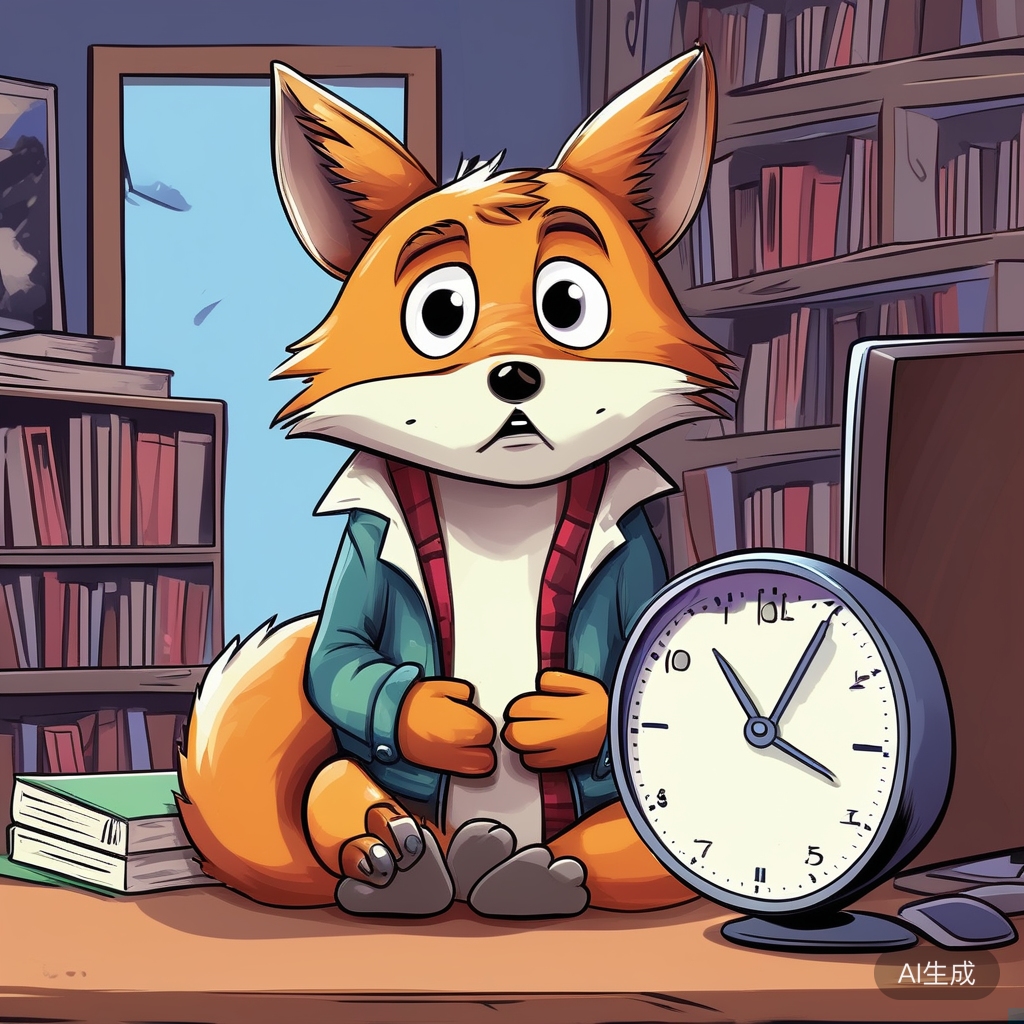Hey there, I’m Xiao A, a Tsinghua University grad, a management trainee at a Fortune 500 company, and a LinkedIn column writer. I’m all about work, but I’m even more into life. In my spare time, I like to type away and share the most practical workplace skills with y’all.

Now, let me confess something—I’ve been a bit of a clickbait artist. Remember that post where I introduced some common workplace tests, like DISC? Yeah, I just glossed over it before, but now I’m going to dive deep into it. Check it out: [324] These tests, you definitely don’t know about them – A comprehensive review of career tests.
But first, let me share a little anecdote. During a training session, after we all took the DISC test, the trainer had us divide into four groups based on our types. Here’s what happened: The D group was a lively bunch, everyone talking over each other, speaking quickly, and getting excited; the I group was also having a great time, with lots of enthusiastic discussions; the S group was quiet, with everyone listening attentively when someone spoke; and the C group was orderly, with some people speaking and others taking notes.
During the summary session, it was much the same: The DI group had their leaders speaking, but people would often jump in and add their two cents; the SC group would listen patiently to their leaders and then raise their hands to add on.

This was really fascinating, way more useful than horoscopes any day. I mean, there are only 12 zodiac signs, and you have to guess for several rounds to get it right…
Alright, let’s backtrack a bit and go over the basics of DISC. It stands for Dominance (Dominant), Influence (Influential), Steadiness (Steady), and Conscientiousness (Conscientious). Here’s a simple explanation: the horizontal axis can be understood as the speed of action, from perception to sensation; the vertical axis is about environmental awareness, from thinking to feeling, from focusing on tasks to focusing on people.
For example, I’m a C type. I always thought I was efficient because I don’t procrastinate, so I was a bit confused as to why C is on the left side, which is slower. But actually, because C types value rational analysis and logic, they tend to double-check things, which makes them slower than the action-oriented types on the right.
I also think I’m quite friendly and considerate of others’ feelings, but compared to tasks and objective facts, I prioritize solving problems and focusing on facts. So, the four quadrants of DISC are relative, not absolute.

Each type has its unique behavioral style, communication method, motivators, strengths, and limitations. Understanding your type’s characteristics can help you play to your strengths and avoid weaknesses in your actions. Similarly, understanding other types’ characteristics can help us better understand others and find more suitable ways to collaborate and communicate.
Let’s take a look at the general characteristics and behaviors of each type. You can use these to quickly categorize people, though sometimes it’s not easy to tell just from their appearance, especially in the workplace, where behavior is often intentionally corrected and may not reflect one’s true personality.
Dominance (D):
Characteristics: Loves making decisions, action-oriented, argumentative, enjoys bossing others around. Often has an inexplicable confidence, probably because they frequently make the right decisions, which can make them come across as domineering in communication.
Motivation: Pursues power, has a strong sense of purpose, is execution-oriented, and enjoys continuous challenges.
Suggestions and: Because they don’t pay much attention to others’ emotions and can’t stand it when others are slow, they should learn to listen more, not interrupt others, and slow down their pace a bit.
Representative character: Think of Wukong (Monkey King).
Influence (I):
Characteristics: Optimistic, enjoys making friends, likes to express themselves, speaks without thinking, has quick mood swings, loves novel and fun things, can be exaggerated, likes shiny and flashy things, is easily bored, and tends to gain weight (heart, I guess).
Motivation: They want to be noticed, to influence, and to be loved.
Suggestions and: They are a bit disorganized and prone to making promises easily. They should manage their schedule appropriately and not make promises casually.
Representative character: Zhu Bajie (Pigsy… or maybe Chang’e, the Moon Goddess).

Steadiness (S):
Characteristics: Concerned about others’ feelings, considerate, friendly, dislikes conflicts, rarely argues with others, and is more traditional. Often has the kind of face that makes you think, "This person is a good person."
Motivation: Values harmony, likes stability, and safe emotional and interpersonal relationships.
Suggestions and: Being too concerned about others’ feelings can sometimes lead to self-denial and oppression. It’s important to learn to say no and express your own feelings and needs.
Representative character: Sha Wujing (Friar Sand), who is and patient.
Conscientiousness (C):
Characteristics: Good at solving problems, authoritative, thinks quickly, easily blushes, lives a disciplined life, likes rules, loves to ponder, and has a strong sense of foresight. Not many overweight people (because they worry a lot).
Motivation: Continuously improving, pushing themselves to be better, feels insecure.
Suggestions and: Because they have high self-expectations, they may not be able to accept criticism well. They can also be demanding of others and need to lower their standards a bit, focus on others’ strengths, and learn to praise and encourage others.
Representative character: Tang Sanzang (T Tang), who’s always nagging.
While looking for images, I found this one quite interesting. Check it out:
[Insert Image]
Now, after reading all this, do you find it interesting? By observing some behaviors and language, you can understand what type a person is, what their inner needs are, and it becomes easier to understand their actions and communicate better.
All of this can be applied in the workplace. But I’ve got a special tip for you: how to communicate and get along with bosses of the four different types?
With a D-type boss:
- When reporting, get straight to the point.
- If you make a mistake, focus on what you’ll do next, not just apologize.
- They like to make decisions one by one. If they say A won’t work, they’ll move on to B.
With an I-type boss:
- Show enthusiasm for others, be interesting, and express more facial emotions.
- Talk more about happy things and less about unhappy things.

With an S-type boss:
- They believe that time reveals a person’s true colors, so gaining their trust takes time.
- Don’t rush things; be reliable in the long run and focus on maintaining relationships.
With a C-type boss:
- Be well-prepared when communicating and reporting to avoid being caught off guard (because they pay attention to details and logical analysis).
- Follow the rules and don’t do anything against the rules.
- Present multiple options for decision-making (unlike D-type), and be ready to present another set of options if the first one is rejected.
Finally, let’s talk about relationships. It’s said that people on the diagonal of the DISC chart are easily attracted to each other: "There’s actually someone out there who is so different from me!" For example, C and I, D and S.
I’m a high C type. After I attended this training, I realized that Damiao is an I type! At first, he thought I was amazing because I was so organized and disciplined, and I thought he was fun because he had so many ideas. But over time, he felt I was too rigid and predictable, and I felt he was too spontaneous and disorganized. After learning about the DISC personality traits, I realized these weren’t just coincidences.
Actually, many issues already exist; we’re just caught in them and don’t know how to deal with them. But the beauty of tools like DISC is that they provide an outsider’s perspective, allowing us to see ourselves and others more comprehensively and understand and tolerate others better.
That’s all for now.
Join the 100-hour plan anytime. For more details, check out: [276] 100-hour plan

@A
#100-hour Tango# has reached 82 hours. After a month-long break, I’m back in the dance pool. Continuing with the basic lessons…
@Summer Solstice
#Reading 100 Hours# Unconsciously, it’s already 88 hours. I finally deeply realized that "what you’re doing is far from being diligent." When I really focus on reading and learning, I make significant progress. The fog in front of me is clearing, and I’m gradually seeing myself. In 2017, let’s keep going.

@Fox Wants to Gain Weight
#100-hour English Reading# Has reached 23 hours of speaking time. It turns out that I only spend an average of 2.1 hours a week speaking English, which is why my spoken English isn’t very good (as if my reading and writing are any better [facepalm])…

[Insert Image]
Feel free to tip if you’d like. Personal account upgraded to a business account with (tips) disabled. Scan the QR code to tip.
[Insert Image]
Keywords: backend, skills, email, boss, English, promotion, job-hopping, management, interview, campus recruitment, motivational stories, life, etc. You can check out past articles by typing any keyword related to the workplace.
Recommended:
Reply with a number to view, or you can try your luck with any number under 315.
Learning English: 184 – Essential Abbreviations for Foreign Companies, 186 – English Email Reports, 266 – Tips for Better Oral Communication
Improving Yourself: 253 – Ask the Right Questions for Better Results, 280 – SBI Feedback Method, 286 – Foreign Company Thinking Style
Real Skills: 302 – Say Goodbye to Procrastination, 312 – Communication Skills Not Just for Flirting, 314 – What to Learn to Become a Manager
Motivational Stories: 189 – How to Make One Hour Feel Like Four, 300 – Troubles of Elite Graduates, 303 – Return to 20
Listen to shares: "Lychee" "Grapefruit" to get the link
[Insert Image]








